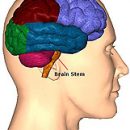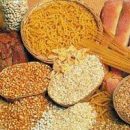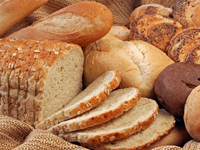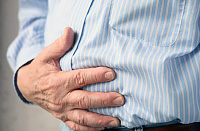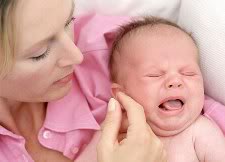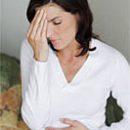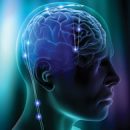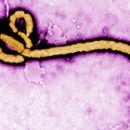In children, chronic gastritis and duodenitis are rarely found in an isolated form, more often doctors face a combined lesion - gastroduodenitis. How is chronic gastroduodenitis and what is his exacerbation? What to do if the child fell ill?
Content
- Why gastroduodenit occurs?
- Causes of gastroduodenitis
- How does chronic gastroduodenitis flow?
- Signs of exacerbation of chronic gastroduodenitis
- What to do with the exacerbation of chronic gastroduodenitis in a child?
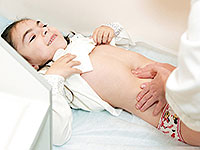 Unfortunately, children often meet quite «Adults» Diseases associated with bad habits and an unhealthy lifestyle, which we often patch, parents. One of these diseases is chronic gastroduodenitis — Inflammation of the gastric mucosa and duodenal intestine, most often arising against the background of food errors.
Unfortunately, children often meet quite «Adults» Diseases associated with bad habits and an unhealthy lifestyle, which we often patch, parents. One of these diseases is chronic gastroduodenitis — Inflammation of the gastric mucosa and duodenal intestine, most often arising against the background of food errors.
Why gastroduodenit occurs?
In adults, gastritis and duodenitis develop more often, in children in 75% of cases, doctors diagnose double damage to organs, accompanied by inflammation and thinning of their mucous membranes, secretion and motility disorders. Since hormones regulating the functions of the gastric, biliary tract and pancreas are synthesized in the duodenum, the development of gastroduodenitis leads to a global disorder of digestion and affects the general state of the child's health.
Causes of gastroduodenitis
- Nourishing disorders: irregular meal, defective food, food «Suchomensy», Eating sharp, spicy, fried dishes, smoked and marinades, which are not able to be absent in the child's diet. The increase in the incidence of gastroduodenitis doctors associate with the cooking enthusiasm of children by Fast Food, which often not only does not stop, but also welcomed by parents.
- Excessive loads at school, psychotrauming situations in the family and children's teams, leading to psycho-emotional stress and stress, implemented in the dysfunction of the vegetative nervous system, violations of secretion and motorcycle stomach and duodenal.
- Ilicobacter Pylori infection (Helicobacter Pylori), causing the formation of erosions in the stomach and intestines.
- Hereditary predisposition to diseases of the gastrointestinal tract, often reinforced by family traditions.
- Reception of some drugs, for example glucocorticoid, cytostatics, non-steroidal anti-inflammatory agents.
- Food allergy.
- Various factors that reduce the overall immunity and local protection of the gastric mucosa and duodenum.
How does chronic gastroduodenitis flow?
Chronic gastroduodenit — The cyclic disease that proceeds in the form of exacerbations alternating with light gaps, or remissions.
The exacerbations of chronic gastroduodenitis are provoked by nutrition errors, stressful situations, increased neuropsychiatric loads, various infections. No wonder the peak of the incidence of gastroduodenitis coincides with the beginning and end of the school year, the autumn-spring epidemics of ARVI and winter holidays.
The severity of exacerbation is determined by the degree of violation of the overall state of the child, the severity of pain syndrome and dyspepsia. External exacerbations usually disappear after 7–10 days, but the mucous membrane and duodenum is restored 1–2 months, which necessitates the need to strictly observe the diet during the rehabilitation period.
During the child's remission, practically nothing bothers nothing, but attentive parents can notice lethargy, increased fatigue, drowsiness, change of appetite, reduced body weight of the kid. Sometimes the child complains of headaches, dizziness, sometimes at large intervals between meals, it throws in sweat and znobit.
Signs of exacerbation of chronic gastroduodenitis
Gastroduodenit — A disease that does not have typical symptoms. Inexperienced eye easily confuse it with another pathology of the digestive system.
With the exacerbation of chronic gastroduodenitis, a child appears a new or grab-like pain in the upper part of the abdomen and the nearby region. Usually pain manifests after 1–2 hours after meals and to stop it, you have to feed the baby again or give it preparations that reduce the acidity of the stomach.
The pain is accompanied by an increased salivation, nausea, belonging to acidic contents of the stomach with a taste of bitterness, heartburn, sensation of gravity and bloating. Sometimes a child has vomiting, while the vomits contain an admixture of bile.
The child looks pale, his face at the moment of painful attack is covered with cold later. The language is covered with a thick white or yellowish flare, edema, on its external surfaces you can see dents from the teeth.
Some symptoms exacerbation of chronic gastroduodenitis have their own characteristics depending on the form of the disease.
- The manifestations of ulcer-like gastroduodenitis resemble the symptoms of duodenal ulcers. Strite pain is strong, occurs on an empty stomach, at night or 2 hours after meals.
- In the gastritis-like form of the disease, similar to atrophic gastritis, is more likely the intolerance to certain products, nausea, air extermination, vomiting of eaten food.
- Pancreative-like gastroduodenitis has the features of inflammation of the pancreas, is accompanied by strong pains in the upper part of the abdomen (more left or slimming), meteorism, diarrhea.
- The cholecystow-like form of gastroduodenitis is manifested by pains in the top of the abdomen (more on the right), the feeling of bloating, rude, nausea, belching and vomiting bile.
What to do with the exacerbation of chronic gastroduodenitis in a child?
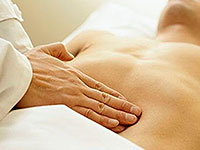 First of all, you should consult a doctor, it will make it possible to accurately establish the cause of the ailment and choose the appropriate treatment.
First of all, you should consult a doctor, it will make it possible to accurately establish the cause of the ailment and choose the appropriate treatment.
In the acute period, the child is shown bed resting 7–8 days.
Food should be dietary, in the first days five-hexistent, gentle, eliminating strong broths, mushrooms, fatty meat, salty, sharp, smoked and canned foods, sweets and sdobu, containing coarse food fibers and fruits. All dishes should be prepared for a couple or by boiling and baking, food is recommended to wipe before use. In the future, before recovery, the child's nutrition must match the diet number 5.
If the fact of infected with Campylobacterium is installed, the child is prescribed antibiotics and antimicrobial drugs. With increased acidity of the stomach, preparations are shown that reduce the secretion of hydrochloric acid and protect the mucous membrane from the action of digestive juices. Antispasmodic preparations can be used to eliminate abdominal pain. During the rehabilitation period, sanatorium-resort treatment is shown.
Source: A. BUT. Baranov, children's diseases. «Gootar-Med», 2002.

